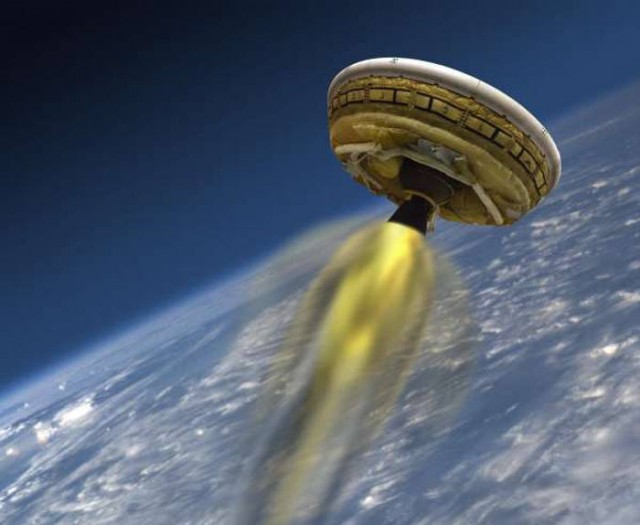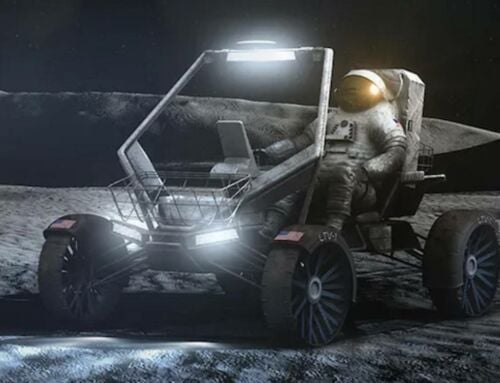NASA is testing ‘Flying Saucer’ Mars lander, which will play a crucial role in future Red planet missions.
An artist’s concept shows the test vehicle for NASA’s Low-Density Supersonic Decelerator (LDSD). Image credit: NASA/JPL-Caltech
NASA is looking with the “Low Density Supersonic Decelerator” (LDSD), for a safe–and slow–way to land on Mars.
The space agency plans to conduct a “spin-table” test today, to check the four small rocket rotors that spin and stabilize the lander as it descends.
“Breakthrough technologies that will enable large payloads to be safely landed on the surface of Mars, or other planetary bodies with atmospheres, including Earth.”
As NASA plans ambitious new robotic missions to Mars, laying the groundwork for even more complex human science expeditions to come, the spacecraft needed to land safely on the red planet’s surface necessarily becomes increasingly massive, hauling larger payloads to accommodate extended stays on the Martian surface.
Current technology for decelerating from the high speed of atmospheric entry to the final stages of landing on Mars dates back to NASA’s Viking Program, which put two landers on Mars in 1976. The basic Viking parachute design has been used ever since — and was successfully used again in 2012 to deliver the Curiosity rover to Mars.
source NASA






Leave A Comment